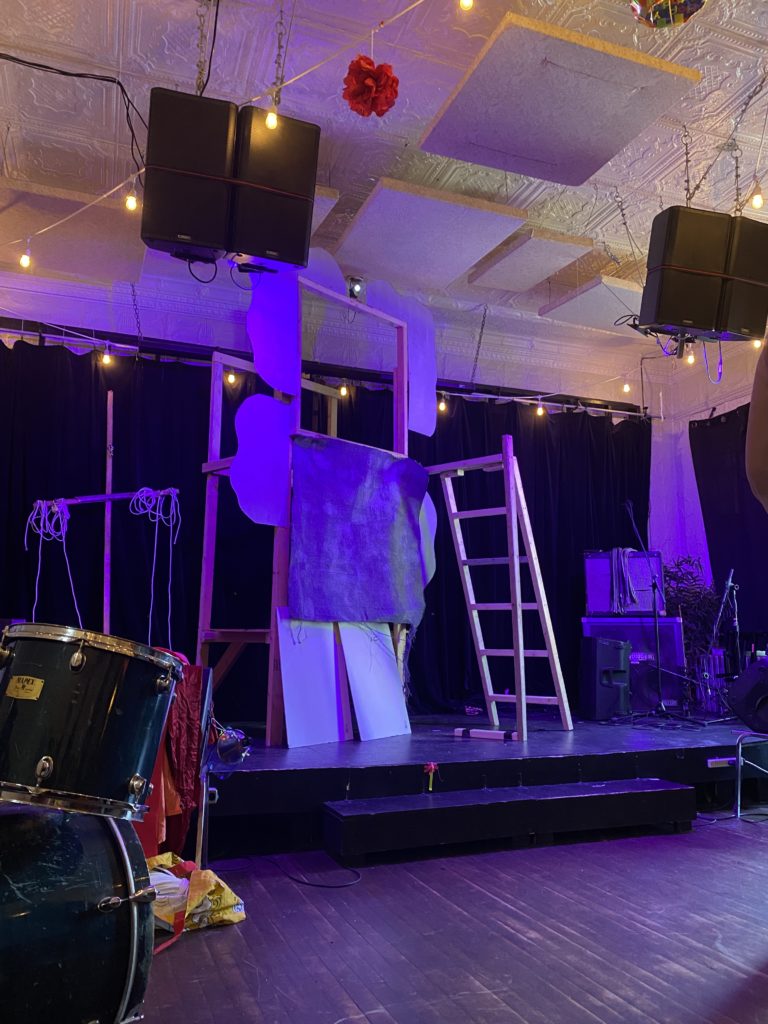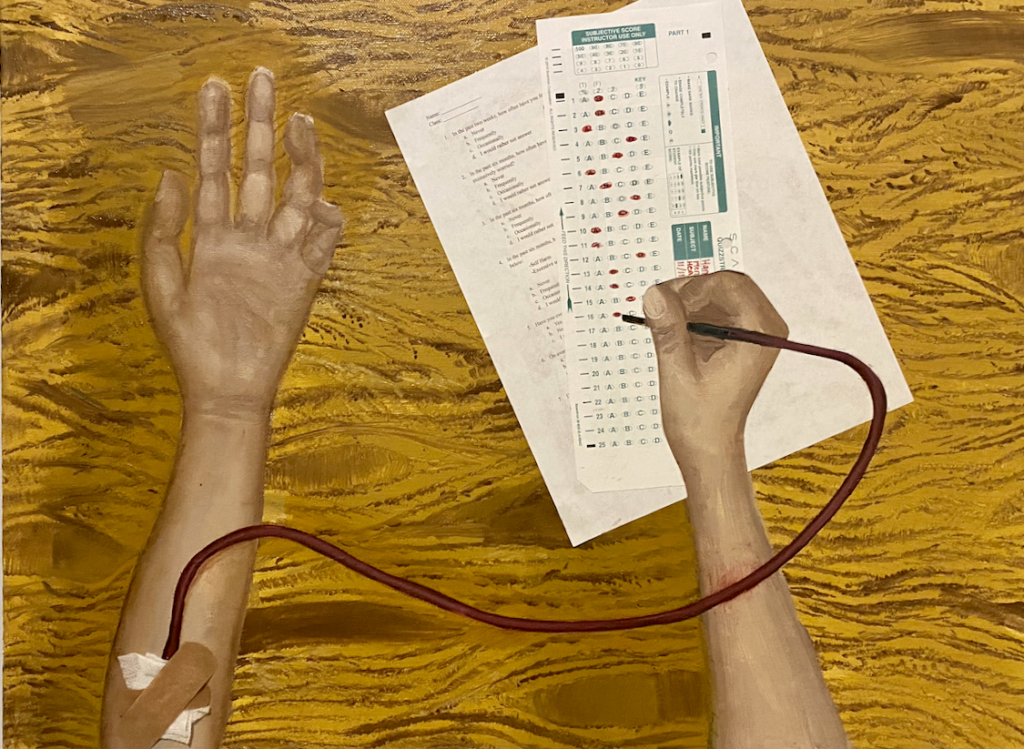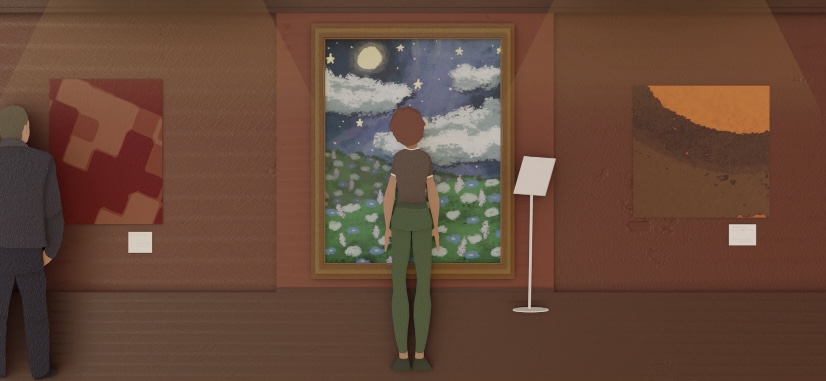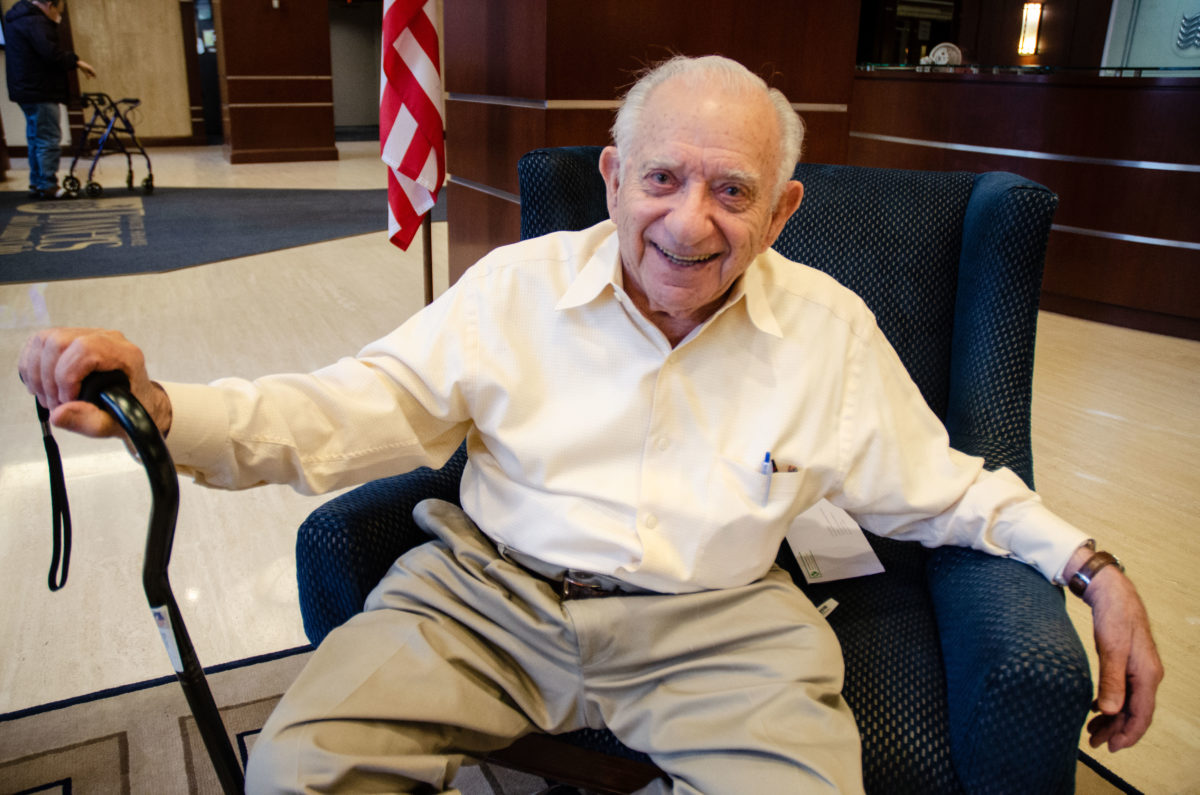A Nonagenarian and WWII Veteran Looks Back at His Life
By David Paone
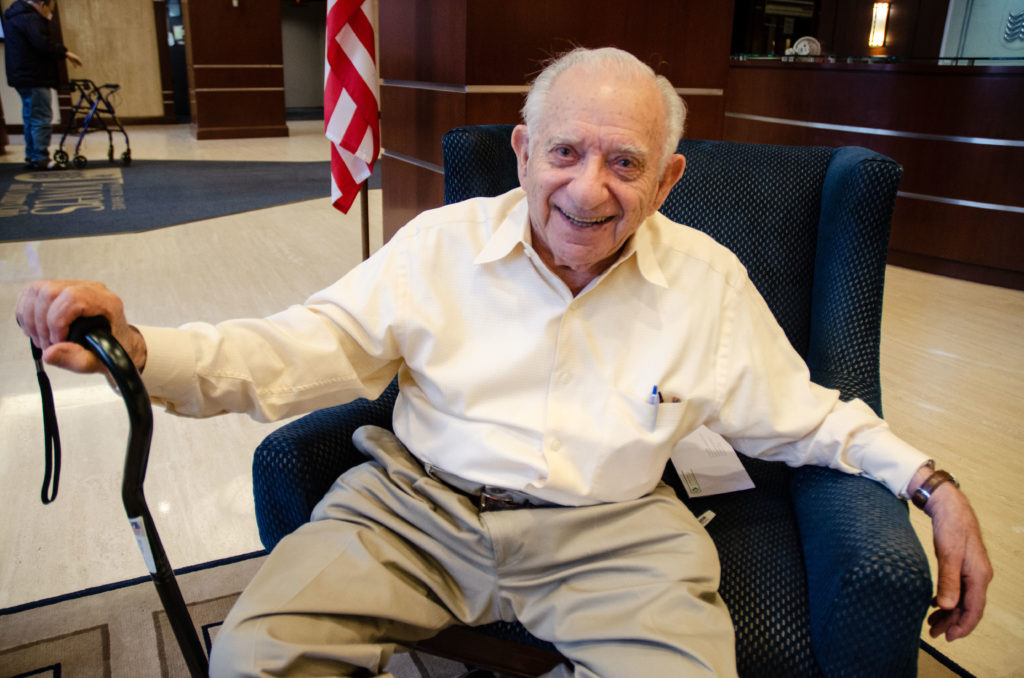
They call them the Greatest Generation: those who lived their childhoods during the Great Depression, only to have to fight the Second World War when they came of age.
Bill Isaacson, a resident of North Shore Towers, can check both those boxes. The Navy veteran sat down with The Queens Ledger and looked back over his 97 years.
Beginnings
Isaacson was born in the Fort Hamilton section of Brooklyn on May 5, 1925, the second of five children of Russian immigrants.
His father owned a furniture manufacturing and sales company, but during the Depression, lost the business. He also lost the family house, which he owned.
Isaacson said his family survived, “as best we could.”
On December 7, 1941, the Japanese bombed the US naval base in Pearl Harbor, Hawaii, and America entered World War II. Isaacson remembers the day.
“I was in a basement socializing with a group of teens,” he said. “And we heard about the war breaking out. And I went to enlist. My father wouldn’t sign the papers.”
Isaacson was only 16 at the time but sensed the need to volunteer. “I felt I wanted to do my part,” he said.
His friends were eager to enlist and all were later drafted. “Likewise, they wanted to do their part, of course,” he said.
Uncle Sam Wanted Him
When Isaacson turned 18 in 1943, the war was not over, making him eligible for the draft.
“I didn’t get drafted right away because I had pneumonia at the time of my 18th birthday, and the draft board gave me 90 days to get well,” he said.
By this point Isaacson had one friend from the neighborhood – also 18 – who was in the service and had died in Italy.
Isaacson chose the Coast Guard, but the draft board had a different plan for him and he was inducted into the Navy in April 1943.
As an honor graduate from signalman school, Isaacson was a Signalman Second Class and appointed to Flag Command, which is the personal staff of admirals.
“I served with Admiral Sherman aboard the USS Missouri and with Admiral Fechteler aboard the USS Wisconsin,” said Isaacson.
“I was on all the biggies,” said Isaacson, regarding the ships on which he served. These included the USS Wisconsin, the USS Missouri, the USS Enterprise, the USS New Mexico and the USS Guadalcanal, which brought back 495 former prisoners of war from Japan.
“I was on duty when five of them jumped overboard,” said Isaacson.
He saw each of them light a cigarette and jump, in what Isaacson believes were definite suicides. “This was in the middle of the night,” he said. They circled until daylight but never found them.
Japan surrendered in 1945, bringing an end to the war. Isaacson was on the island of Guam at the time. It just so happened his younger brother, Boris, was on a minesweeper in the harbor, and the two were able to connect for four hours.
Once the end of the war was announced, “Everyone was celebrating,” said Isaacson. “Guam was muddy up to your knees and everybody was dancing.”
Isaacson said he served, “Two years, six months and 15 days.”
He was offered the rank of Signalman First Class, if he reenlisted, but decided to pursue his education instead.
Having served in the military, Isaacson was eligible for the GI Bill, which would cover his college tuition. He earned his Bachelor’s with a major in Spanish (inspired by his high school Spanish teachers) from Brooklyn College in 1949 and his Master’s in 1951 from there, too.
Isaacson calls himself a member of the “52-20 Club.”
“We got $52 for attending school for 20 weeks,” he said with a laugh.
A Brush with Death
In 1950, Isaacson was a student at the University of Havana, in Cuba.
On November 1, a student strike was called for 72 hours. At breakfast, his cook told him, “Something happened in Washington,” and there was no school that day.
Isaacson phoned his professor who said he was conducting class nevertheless and he should attend. Isaacson did.
On the steps of the university, Isaacson was stopped by three men who began to interrogate him. “I answered all their questions,” said Isaacson, and then one asked to see his student ID. It was green, which signified he was from the United States.
“One of them pulled out a pistol and held it to my head and walked me to my room,” he said.
One of the others nudged him and said, “We’re not looking for an incident,” which Isaacson interpreted as his desire to avoid an international incident.
Two of them marched Isaacson and his professor to the curb at gunpoint. They were told, “If you come back in the next 48 hours, you will be shot on sight.”
The man who told the gunman not to start an international incident was the vice president of the student union who called the strike, and a law student as well. It was Fidel Castro.
His professor later told him that the man who held a pistol to his head was the son of Enrique Collazo, the Puerto Rican nationalist who attempted to assassinate President Truman in the Blair House on the same day.
The 20th Century
Isaacson was born before the Empire State Building and George Washington Bridge were erected. He remembers when “peddlers” sold their wares from horse-drawn carriages in Brooklyn.
But the 20th Century saw endless advances in modern comforts and Isaacson was there for most of them.
During the Golden Age of Television in the 1950s, he watched TV comedy pioneers Sid Caesar, Milton Berle and Lucille Ball. But it was the moon landing in 1969 that struck him as the greatest achievement.
During his childhood, the “Buck Rogers” serial was a complete fantasy; space travel was only achieved through movie magic.
But watching an actual human set foot on the moon was real life and not a special effect.
“I couldn’t fathom people walking on the moon,” he said.
Isaacson’s family had relocated to Bayside and he met his future wife in Queens. They had a son and a daughter.
In 1959, Isaacson became an appointed Spanish teacher at Bayside High School and remained there working in various administrative positions until 1985, ending his tenure as assistant principal of the Department of Foreign Languages.
Isaacson spent his entire career in education, also teaching on the college level at Brooklyn and Nassau Community Colleges, and as dean of instruction at Five Towns College. He retired in 2020 after spending 70 years in the classroom when Covid-19 struck.
Modern Times
For most of Isaacson’s life, computers were something the government and huge corporations used; nobody owned one. “Software” and “internet” weren’t even words. But Isaacson has embraced modern technology and uses email and carries a cell phone, although he uses it, “very seldom.”
“I feel it’s a wonderment that I will never understand,” he said.
The Isaacsons were married for 52 years.
It took him 77 years, but Isaacson recently joined American Legion Post 103 in Douglaston.
Isaacson is the picture of health. His memory is still sharp and although he sometimes walks with a cane, he’s still very spry.
World War II veterans are passing daily and in a few short years there will be none left.
“All my friends are gone. They were all in the service,” said Isaacson. “That’s the punishment for living to 97.”

